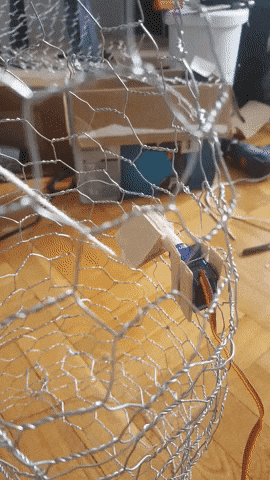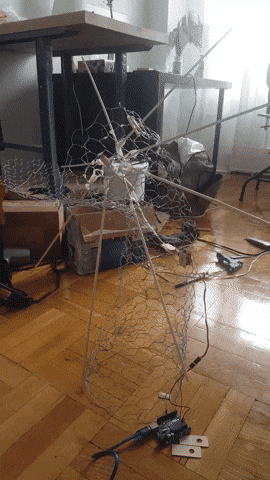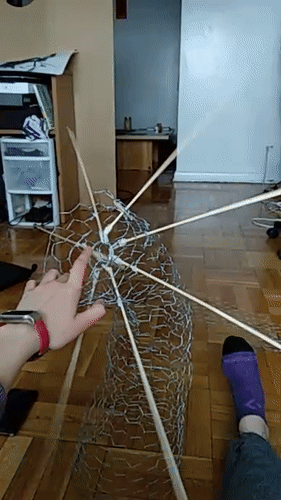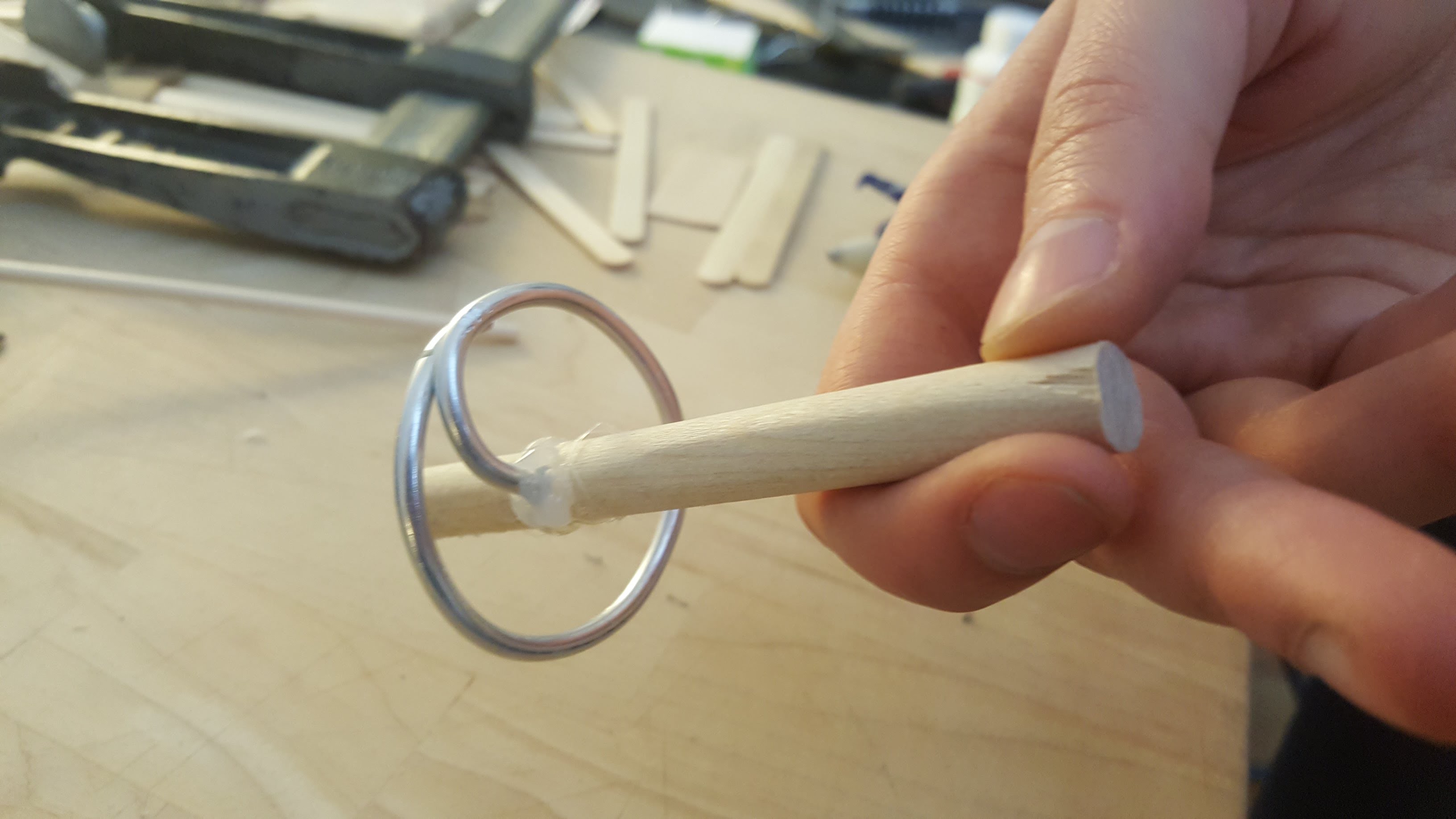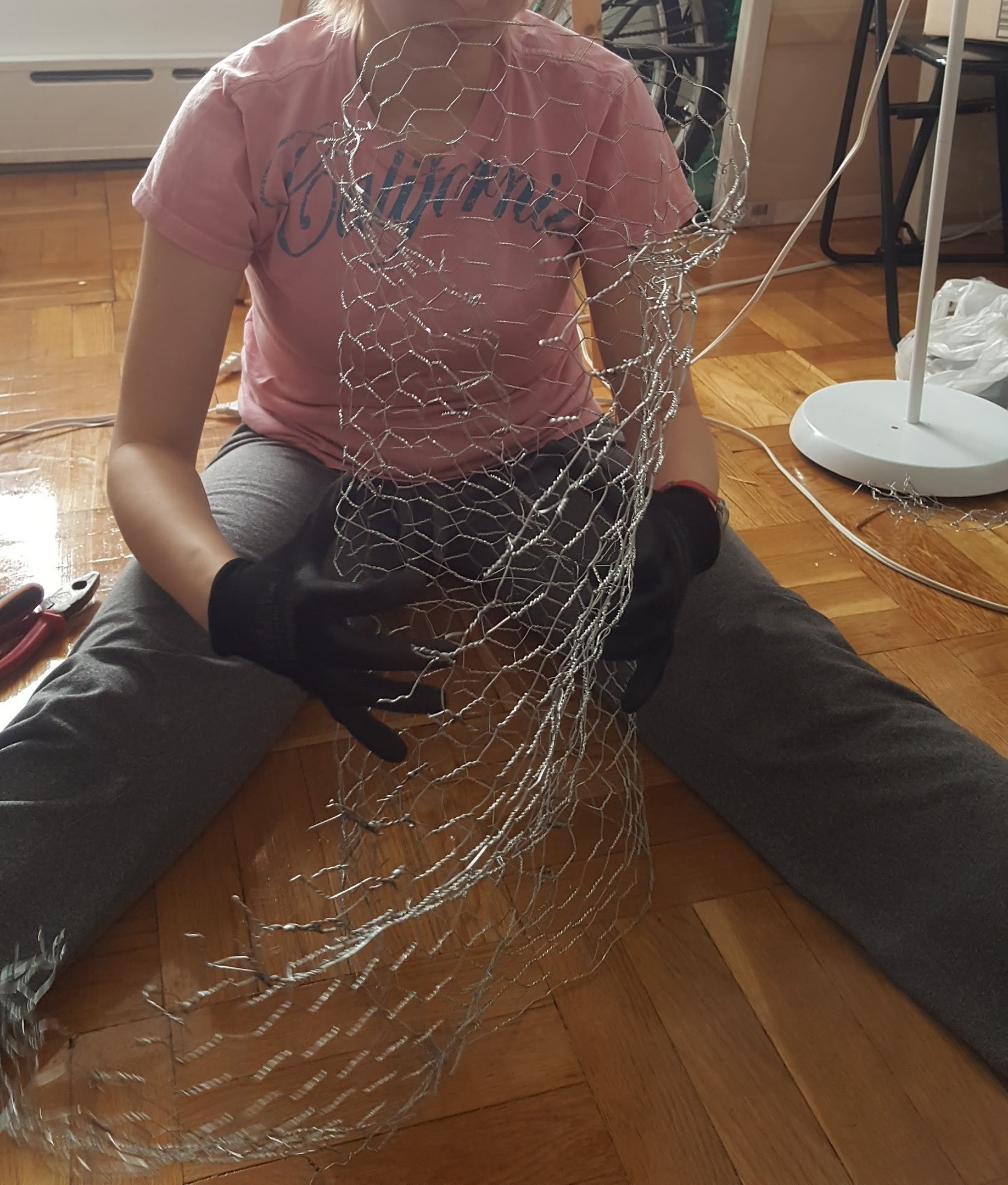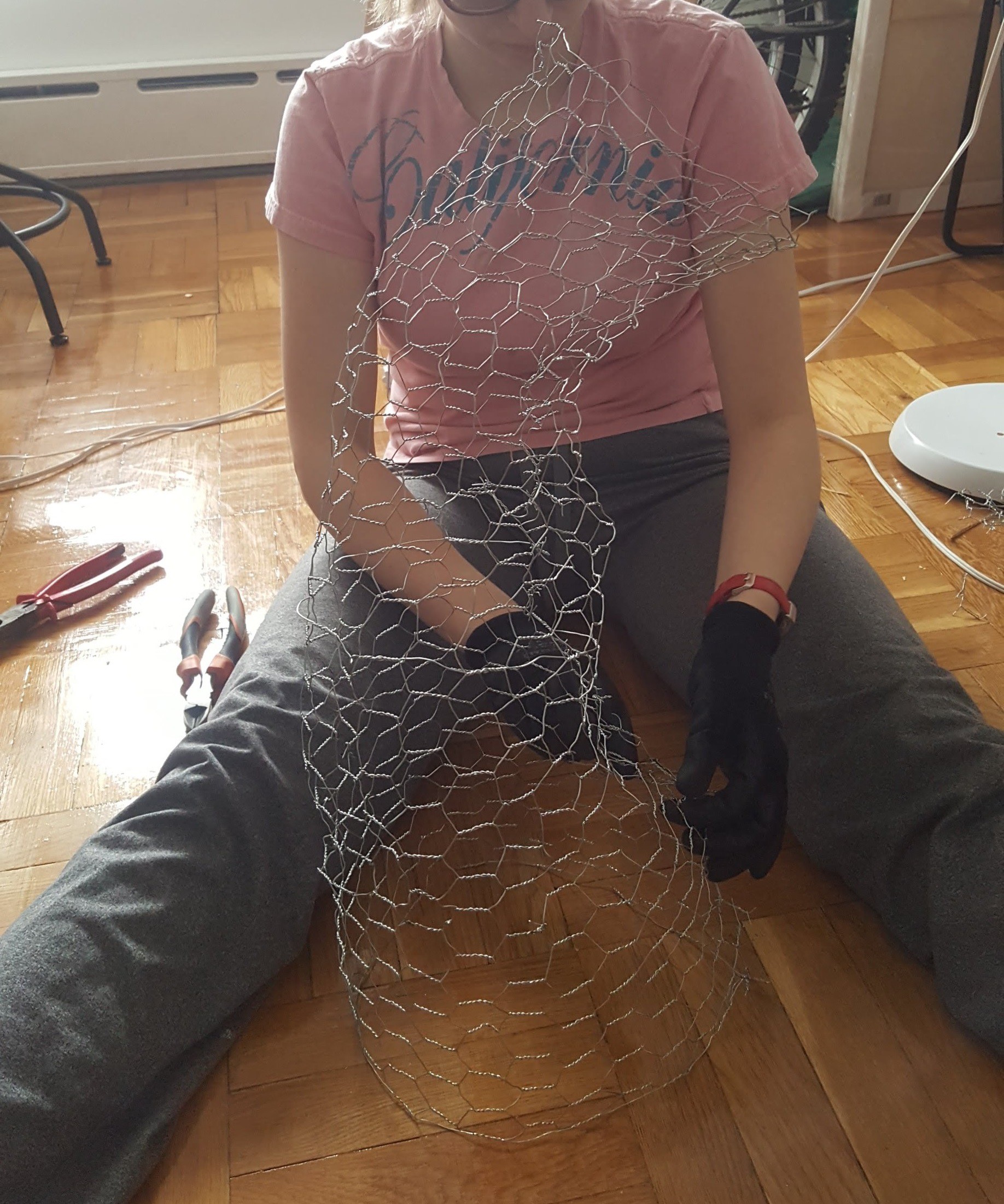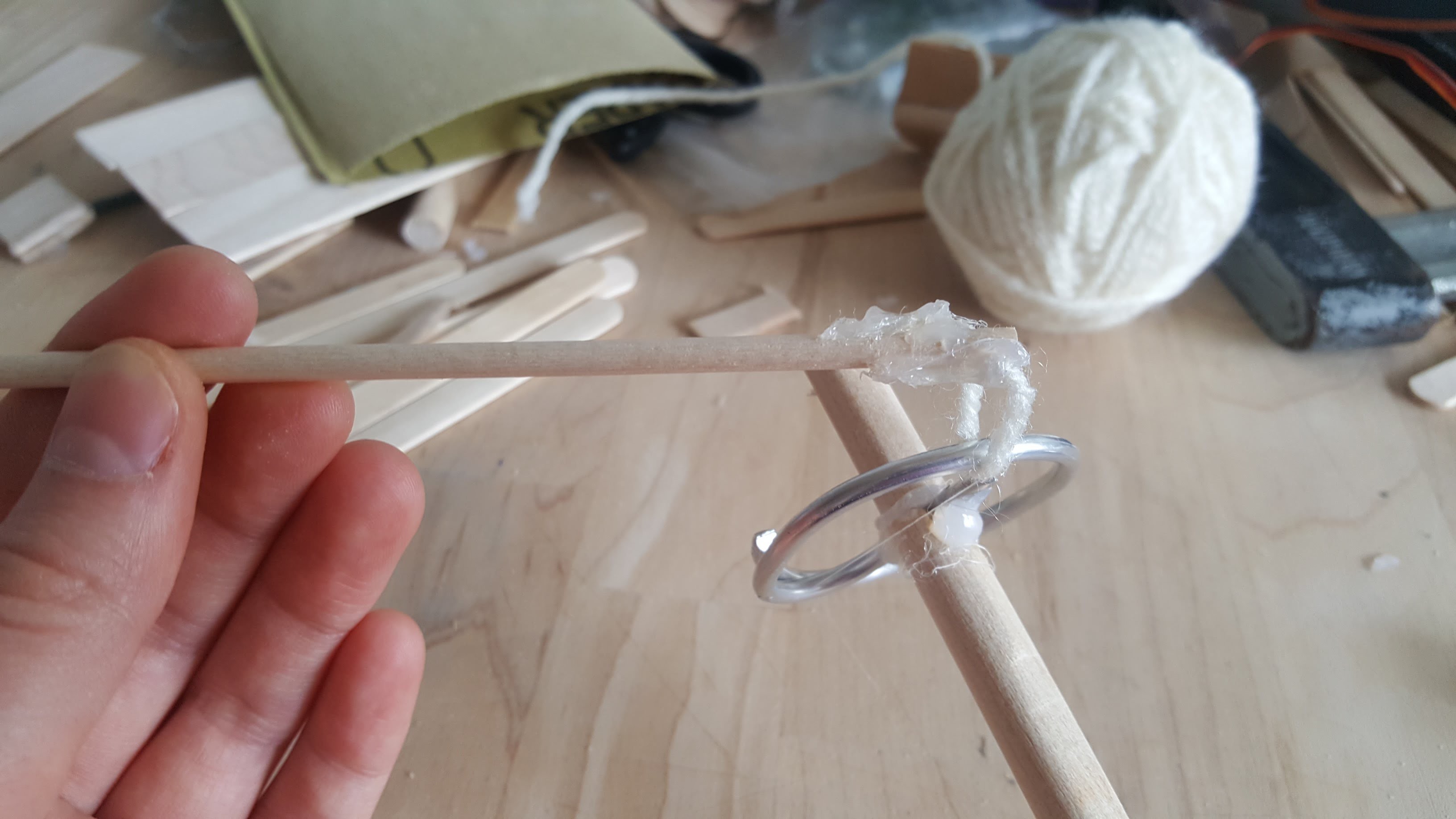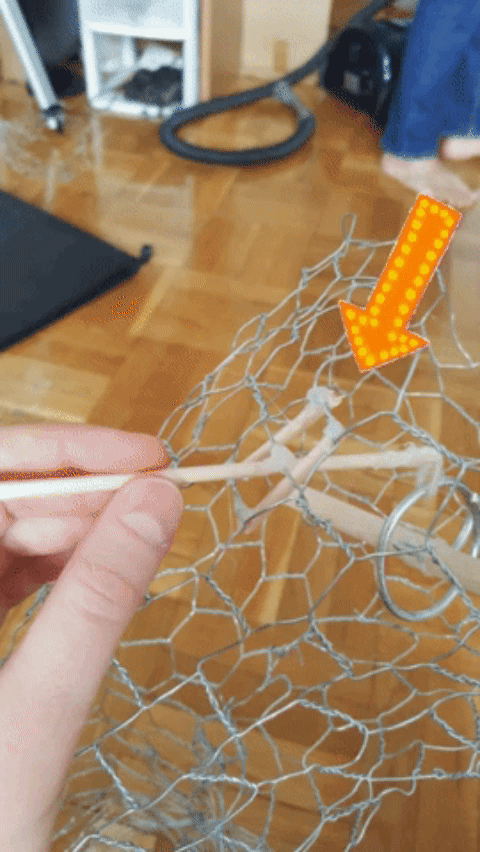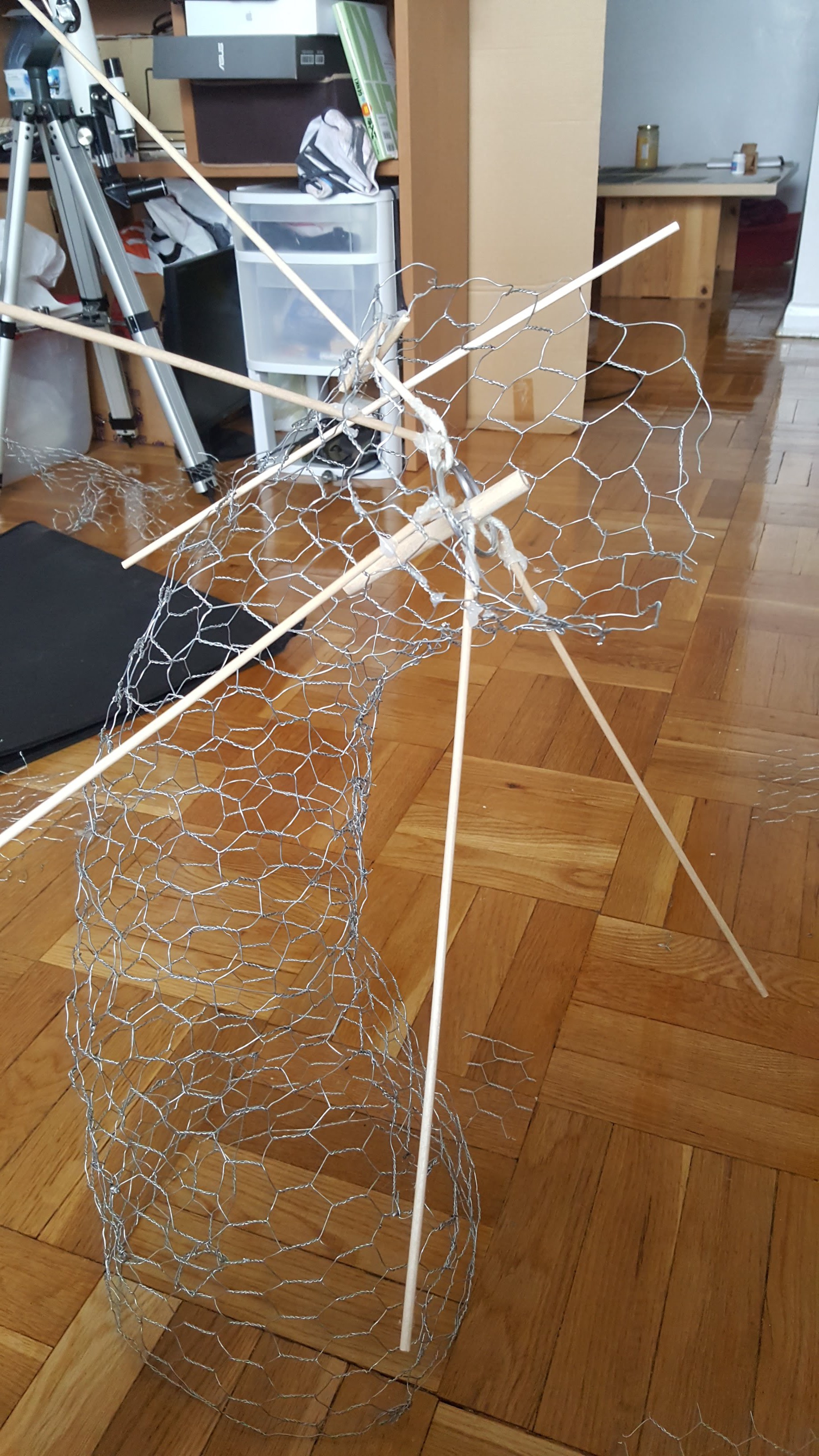-
Dancing petals controlled by motor!
04/24/2018 at 02:47 • 0 commentsLast time, Natalie made the mechanical structure for the moving/dancing petals. This time, she interfaces it to a Servo motor so that I can control it from the Arduino. Let's learn how it's done!
Start by cutting a slit down the length of a dowel. The slit should be just over an inch in length.
![]()
Then, use a saw to chop off that part of the dowel with the slit in it. The length should be around 1.5 - 2 inches.
![]()
Drill a hole through the z-axis of the dowel (on the non-slit side!), where the hole diameter is slightly bigger than the diameter of your motor's end-effector/"round plastic spinning part". Put your motor's end-effector in the dowel hole to see if it fits in (aw yeah).
![]()
![]()
![]()
It fits - woohoo! At this point you may ask: why did we cut a slit on the other side? Because that's the interface to our ring of dancing petals! Cut a large popsicle stick in half and check if it fits inside the slit.
![]()
![]()
It fits too! Wow, this has been going smooth so far. OK, I lied - it took a couple of tries to get to this point and I didn't post pictures of the failed attempts.
Next, Natalie created a simple housing for the Servo motor. The purpose of this is to allow her to easily attach the motor to the inside of the chicken wire and have it be stationary. This can be done simply by cutting 2 popsicle sticks in half and sticking them to the motor on either face. Then, hot-glue the motor to the inside of the planks using a glue gun, and pull out a strand of the chicken wire to wrap around the motor (through the space between the popsicle sticks) and tie it tight against the inside of the structure.
Next, let's finish the interface from the slit to the ring of dancing petals. Cut a popsicle stick into thirds and glue two pieces to the dowel - to the outer diameter of the dowel on one side, and to the popsicle stick (the one we put inside the slit earlier) on the other side. Cut a long piece of twine, long enough to travel from this interface to the ring of petals but NOT TOO LONG (otherwise there will be too much slack and the motor won't be able to pull on it). Hot-glue the twine to the inside of the dowel-slit-popsicles interface here, and hot-glue the other end of the twine to the dowel that's driving the ring of petals.
Great! We've done the mechanical work, so it's time to test it out with the Arduino. Load the "PetalTest.ino" file - available on our project's main page - to your Arduino and plug the Servo motor to your Arduino to test it out! The Servo's Power and Ground wires should connect to 5V and GND respectively on the Arduino, and the Servo's control pin is connected to Arduino pin 9 in our code.
![]()
![]()
-
Made the structure for the dancing petals!
04/20/2018 at 20:05 • 0 comments![]()
Good progress has been made on the plant's structure and its "dancing" petals! Here's how Natalie did it.
Start by drilling a hole in the side of a dowel so that your metal rod can fit though.Then you want to spin the rod around in a circle and glue it into the hole - this circle will be the central anchor point for all our petals:
![]()
Then, get down and dirty and mold the chicken wire with you hands to make the plant's stem!
![]()
![]()
With that in place, you should have a better idea of where the petal anchor point is going to be on the stem. So let's get back to the anchor - start by making the first petal. It's basically a dowel that's attached to the anchor by twine and a generous helping of hot glue.
![]()
Let's put it in the structure and see if it's able to move back and forth like we want. It turns out, it has too much freedom to move back and forth in those huge hexagons of the chicken wire! So, Natalie cut off two more small lengths of dowel and glued them to the chicken wire as a pivot point for the main petal dowel:
![]()
Rinse and repeat that for the other 7 petals, and you'll have finished your initial structure! Always make sure that the central anchor is in the centre of the stem's opening! Or not...I guess it's not a big deal because you can always mold the chicken wire after the fact to the shape that you want.
![]()
That's it! Enjoy poking it back and forth and see if you are getting the range of motion that you would be happy with. Also account for the fact that once the petals are put on these dowels, they are going to be much heavier and hence more difficult for the motor to move them. So, err on the high side for how large a range of motion of the petals you want to see at this stage of the build.
 Natalie
Natalie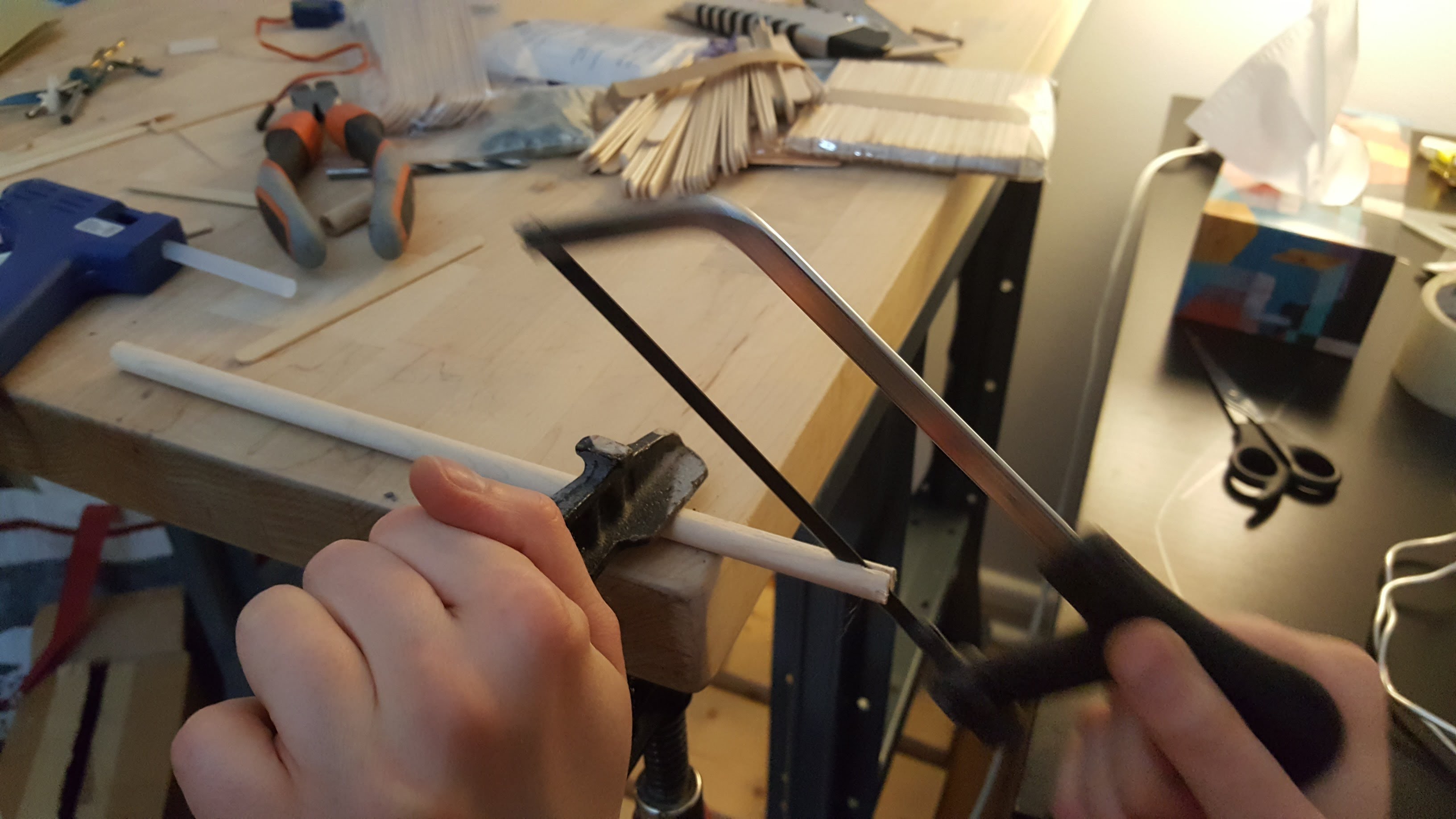
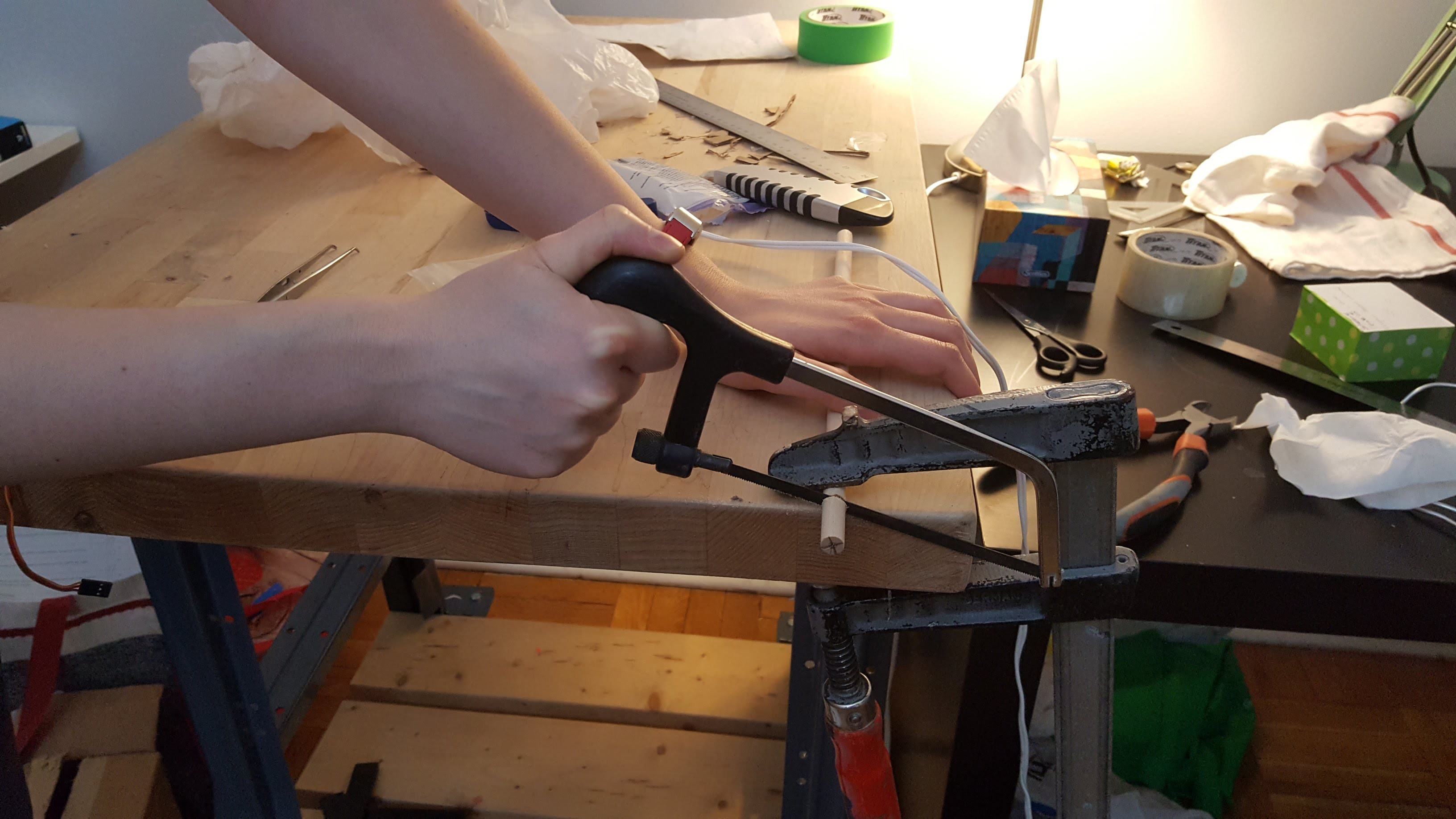
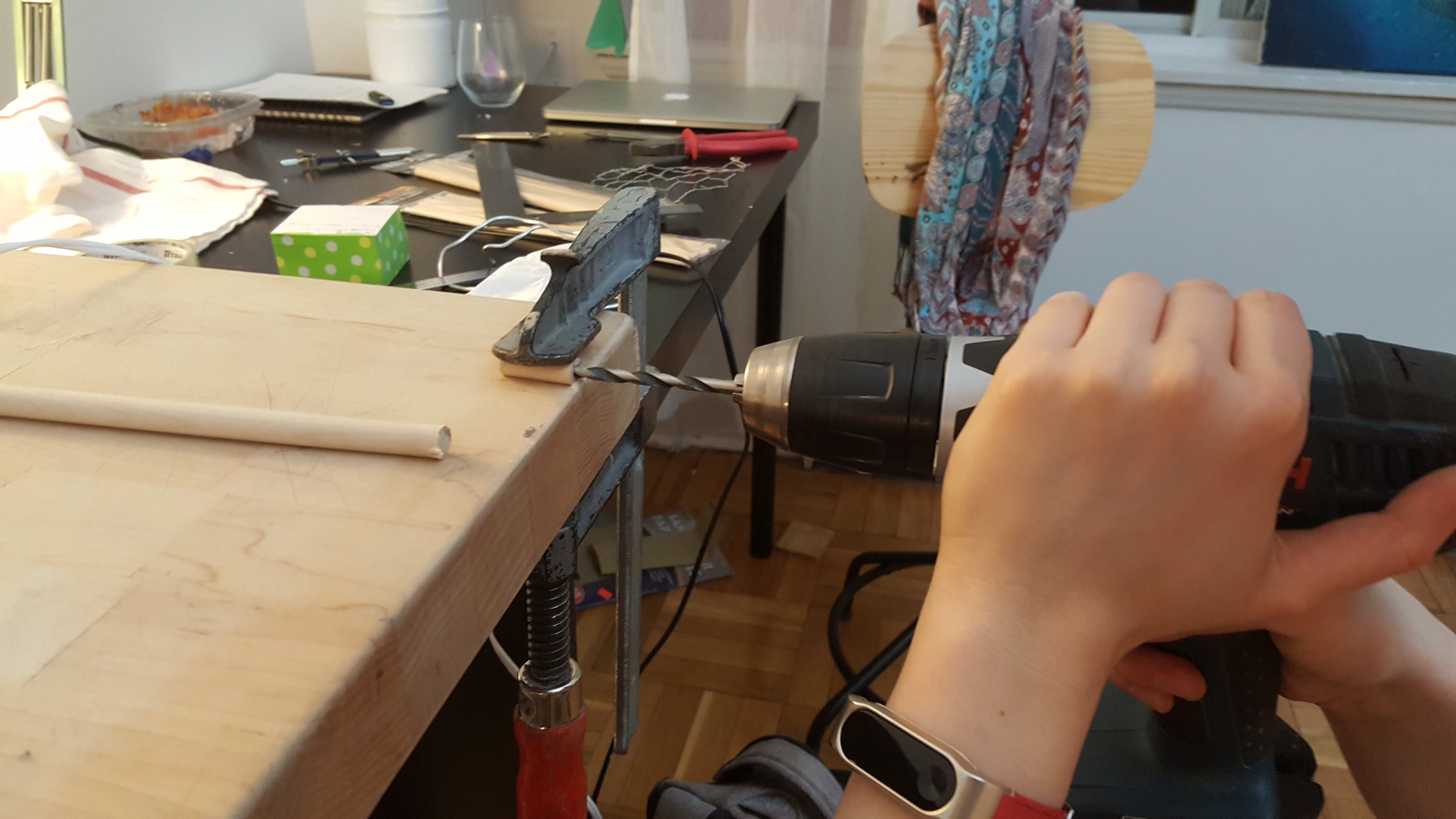
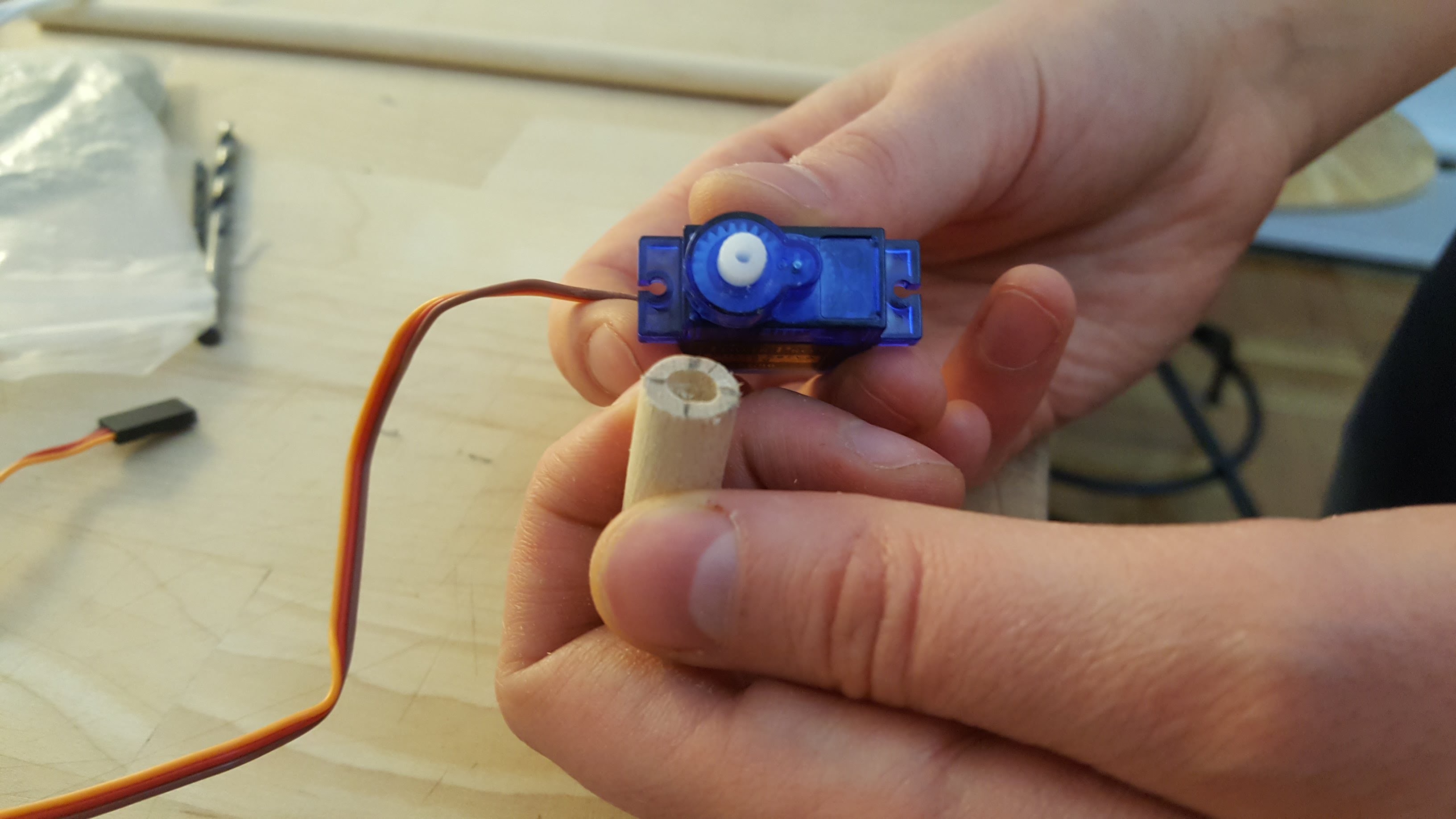

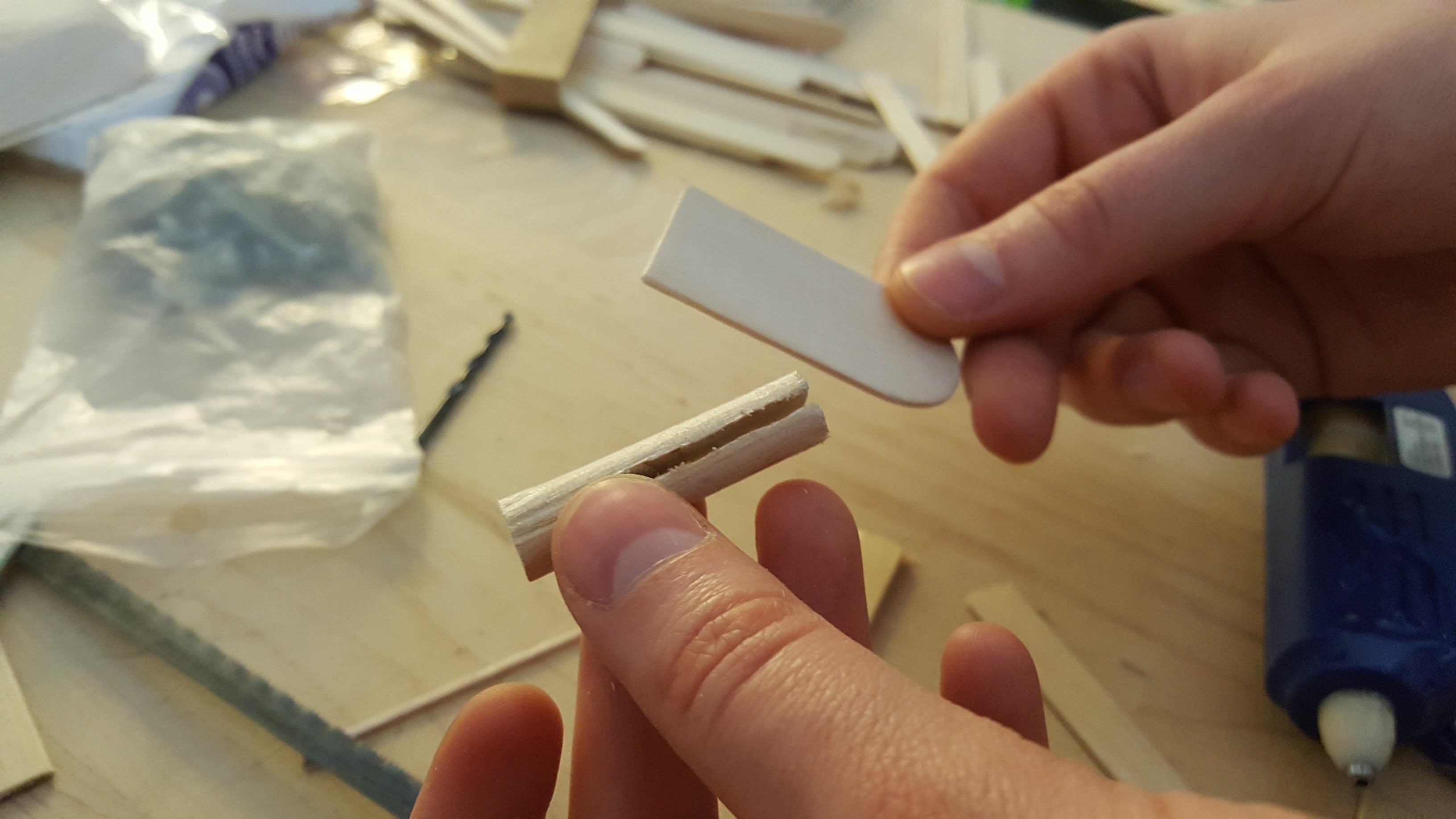
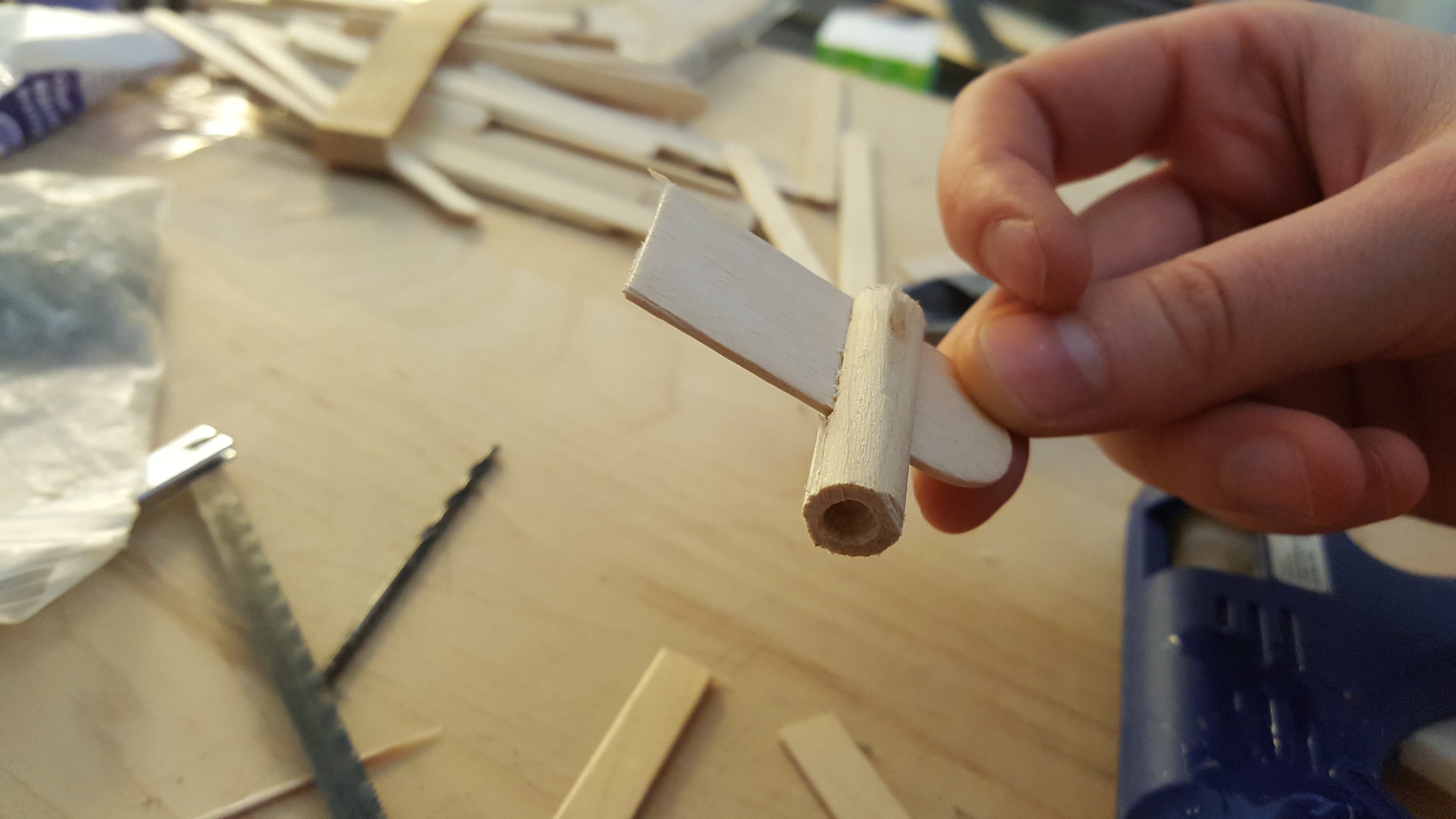
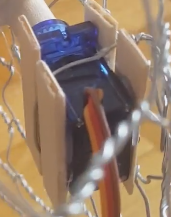
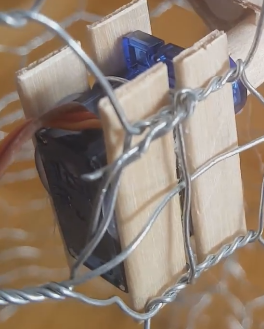 Next, let's finish the interface from the slit to the ring of dancing petals. Cut a popsicle stick into thirds and glue two pieces to the dowel - to the outer diameter of the dowel on one side, and to the popsicle stick (the one we put inside the slit earlier) on the other side. Cut a long piece of twine, long enough to travel from this interface to the ring of petals but NOT TOO LONG (otherwise there will be too much slack and the motor won't be able to pull on it). Hot-glue the twine to the inside of the dowel-slit-popsicles interface here, and hot-glue the other end of the twine to the dowel that's driving the ring of petals.
Next, let's finish the interface from the slit to the ring of dancing petals. Cut a popsicle stick into thirds and glue two pieces to the dowel - to the outer diameter of the dowel on one side, and to the popsicle stick (the one we put inside the slit earlier) on the other side. Cut a long piece of twine, long enough to travel from this interface to the ring of petals but NOT TOO LONG (otherwise there will be too much slack and the motor won't be able to pull on it). Hot-glue the twine to the inside of the dowel-slit-popsicles interface here, and hot-glue the other end of the twine to the dowel that's driving the ring of petals. 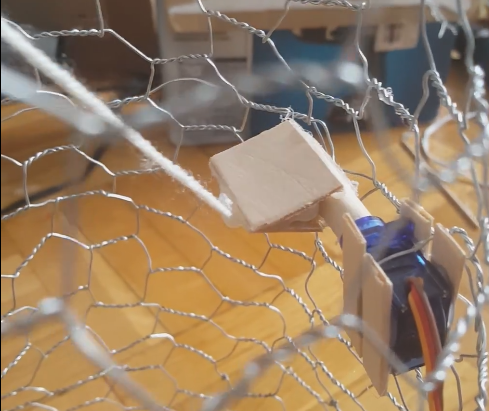
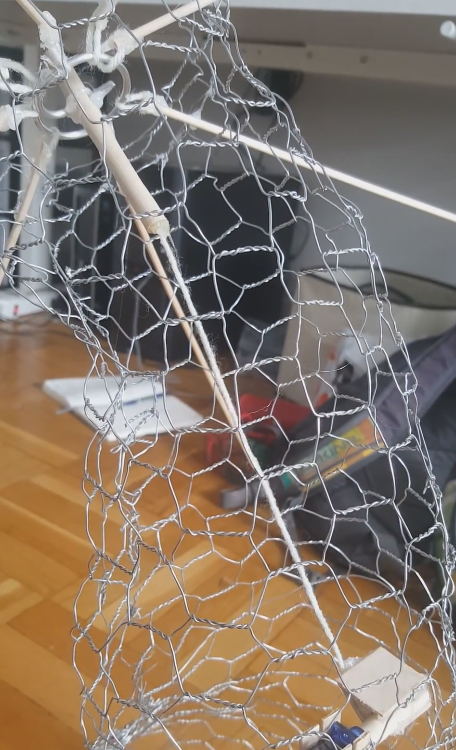 Great! We've done the mechanical work, so it's time to test it out with the Arduino. Load the "PetalTest.ino" file - available on our project's main page - to your Arduino and plug the Servo motor to your Arduino to test it out! The Servo's Power and Ground wires should connect to 5V and GND respectively on the Arduino, and the Servo's control pin is connected to Arduino pin 9 in our code.
Great! We've done the mechanical work, so it's time to test it out with the Arduino. Load the "PetalTest.ino" file - available on our project's main page - to your Arduino and plug the Servo motor to your Arduino to test it out! The Servo's Power and Ground wires should connect to 5V and GND respectively on the Arduino, and the Servo's control pin is connected to Arduino pin 9 in our code.